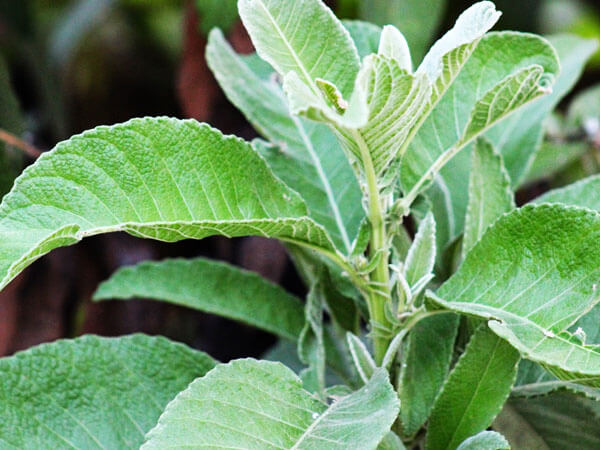Philippine Medicinal Herb
Blumea camphor/Sambong
Blumea balsamifera (Sambong) contains sesquiterpenes identified as blumeaenes and samboginone, and antioxidant flavonoids such as blumeatin, quercetin, rhamnetin, tamarixetin, and luteolin. The volatile oil obtained from Sambong consists of camphor, borneol, isoborneol, terpineol, caryophyllene, guaiol, and eugenol. Sambong displays a variety of biological activities such as antitumor, hepatoprotective, antioxidant, antimicrobial, anti-inflammatory, anti-melanogenic, platelet aggregation, wound healing, and anti-obesity properties. It is used as herbal treatment for kidney stones, cuts or wounds, rheumatism, diarrhea, spasms, colds, coughs, and hypertension. The Philippine Council for Health Research and Development has even developed the technology for sambong herbal medicine tablets particularly for anti-urolithiatic purposes which have been available in the market for such indication. Consumption of Sambong tea or leaf infusion can also help dissolve kidney stones and prevent urolith formation.

Other Names: Ngai camphor, Blumea camphor
Other Traditional Medicinal Uses:
- Antioxidant
- Anti-inflammatory
- Anti-urolithiatic
- Nephroprotective
- Hepatoprotective
- Diuretic
- Antihypertensive
- Anti-diabetic
- Anti-rheumatic
- Antidiarrheal
- Antispasmodic
- Antihyperlipidemic
- Anti-obesity
- Antibacterial
- Antifungal
- Anti-parasitic
- Expectorant
- Reduces cancer risk
References
- http://www.sciencedirect.com/science/article/pii/S0367326X0400245X
- http://pubs.acs.org/doi/abs/10.1021/np100646n https://www.cabdirect.org/cabdirect/abstract/20093199864
- http://www.tandfonline.com/doi/abs/10.1080/13880200590903264
- http://www.mdpi.com/1420-3049/19/7/9453
- http://www.academicjournals.org/journal/JMPR/article-full-text-pdf/BDE903619986
- http://www.medicalhealthguide.com/articles/sambong.htm
- http://www.pchrd.dost.gov.ph/index.php/news/library-health-news/1343-sambong-for-treatment-of-kidney-stone
- http://www.philippineherbalmedicine.org/sambong.htm http://vrh.doh.gov.ph/index.php/en/health-guide
- http://www.sciencedirect.com/science/article/pii/S0308814604001098
- http://www.mdpi.com/1420-3049/19/7/9453
- http://www.tandfonline.com/doi/abs/10.1080/14786410410001709773
- http://www.tandfonline.com/doi/abs/10.1080/14786419.2010.485573
- http://www.worldscientific.com/doi/abs/10.1142/s0192415x09007326
- http://www.tandfonline.com/doi/abs/10.1080/14786419.2010.485573?src=recsys&journalCode=gnpl20
- https://www.researchgate.net/publication/5396243_Anticancer_Activities_and_Mechanisms_of_Blumea_balsamifera_Extract_in_Hepatocellular_Carcinoma_Cells
- https://www.researchgate.net/publication/304575158_Blumea_Balsamifera_Sambong_Tea_as_a_Therapeutic_Drink_for_Calcium_Oxalate_Stones
- https://www.ncbi.nlm.nih.gov/pubmed/18457370
- http://www.idpublications.org/wp-content/uploads/2016/12/Full-Paper-ANTIOXIDANT-AND-ANTITYROSINASE-ACTIVITIES-OF-FLAVONOID-FROM-BLUMEA-BALSAMIFERA.pdf
- http://www.allaboutdiabetes.net/sambong-tea-nutrition-benefits/
